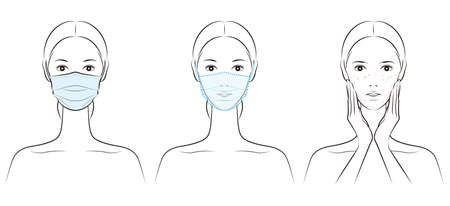1. Introduction: The Allure of Quick Fixes
There’s something undeniably captivating about the idea of transformation in a flash, and nowhere does this ring truer than in Britain’s current obsession with quick fixes. From the glossy allure of reality TV makeovers—think “10 Years Younger” or “Love Island”—to the rapidly growing world of lunchtime tweakments, our culture is awash with promises of instant beauty. I often find myself scrolling through social media, drawn in by before-and-after shots that promise a new nose or plumper lips in the time it takes to sip a flat white. It’s no wonder we’re tempted; the British penchant for subtlety and ‘just enough’ enhancement dovetails perfectly with these minimally invasive procedures. Yet beneath this fascination lies a deeper curiosity: are these quick fixes really as miraculous as they seem? Or are we buying into myths that gloss over what aesthetic procedures can—and crucially, can’t—truly achieve?
2. Setting the Record Straight: What Quick Fixes Can Actually Do
When it comes to non-surgical aesthetic procedures, such as anti-wrinkle injections and dermal fillers, there’s a fair bit of confusion—often fuelled by Instagram-perfect before-and-afters and whispered myths at brunch. Having personally embarked on this journey, I’ve learnt that these so-called ‘quick fixes’ are neither miraculous nor useless; they have real, specific capabilities that are worth understanding.
Let’s break down what these treatments actually achieve in everyday British life, especially for those of us seeking subtle tweaks rather than dramatic transformations. After visiting a reputable London clinic, my practitioner patiently explained—and then demonstrated—the possibilities and limitations. Here’s an honest look at the results:
| Treatment | What It Can Do | What It Cant Do |
|---|---|---|
| Anti-Wrinkle Injections (e.g. Botox) | Smooths out dynamic lines (like crow’s feet and frown lines); gives a fresher appearance; quick procedure with minimal downtime | Won’t lift sagging skin; doesn’t improve skin texture or sun damage; effects last 3-4 months only |
| Dermal Fillers | Adds volume to cheeks/lips; softens deep folds (nasolabial lines); subtly contours features | Can’t replace a facelift; won’t address excess skin; may require maintenance every 6-12 months |
| Skin Boosters/Profhilo | Improves hydration and glow; boosts elasticity slightly | Not a substitute for proper moisturiser or SPF; won’t fill wrinkles or add volume |
The Realistic Result: A Subtle Enhancement, Not Perfection
After my first session with anti-wrinkle injections, what struck me most was how natural the outcome felt—like I’d had a weekend away, not an overhaul. Friends commented that I looked “well-rested” rather than “done.” The process was swift (in and out on my lunch hour), but the effects took a few days to settle in—a gentle smoothing rather than a frozen mask.
A British Perspective: Less Is More
Culturally, we Brits tend to favour understatement over overt change. My practitioner echoed this ethos: “The best tweakments are the ones you can’t quite put your finger on.” This approach means embracing enhancements that work harmoniously with our features, preserving authenticity while gently addressing signs of ageing.
Honest Expectations Make for Happier Experiences
If you’re contemplating non-surgical treatments, remember they aren’t magic wands. They can boost confidence by softening the passage of time—but they won’t stop it altogether. From my experience, setting realistic goals and choosing skilled professionals is key to feeling good in your own skin—without chasing perfection.

3. Common Myths About Aesthetic Procedures
Debunking the Most Widespread Misconceptions
If you’ve ever scrolled through social media or chatted with friends about aesthetics, you’ll know that myths abound—especially when it comes to quick fixes. Let’s tackle some of the most persistent misconceptions head-on, with a little British sensibility and a nod to reality.
Are Results Truly Instant?
The allure of instant transformation is hard to resist. Many believe that a single trip to a clinic will have them looking years younger by teatime. However, most non-surgical treatments—be it dermal fillers, anti-wrinkle injections, or skin boosters—require time for results to fully develop. While there may be an immediate improvement, optimal results often take days or even weeks as swelling subsides and products settle. The idea of “lunchtime tweaks” is appealing, but don’t expect to leave the clinic ready for your close-up straight away.
Can These Treatments Really Replace Traditional Surgery?
This is another area rife with confusion. Non-surgical procedures can offer remarkable enhancements and are fantastic for those seeking subtle refreshment rather than dramatic change. However, they’re not a magic substitute for surgery, especially when it comes to more advanced ageing concerns or structural changes. For example, no amount of filler will achieve the same result as a surgical facelift or rhinoplasty. It’s important to manage expectations—and sometimes, an honest consultation is worth its weight in gold.
How Much Downtime Is Actually Required?
We Brits are known for our stiff upper lip, but nobody wants to parade around town with bruises or swelling if they can help it. Many aesthetic procedures do boast minimal downtime compared to traditional surgery, but ‘no downtime’ is a bit of a stretch. Depending on your chosen treatment—and your body’s unique response—you might experience redness, slight bruising, or tenderness for several days. Planning ahead (and perhaps avoiding any big events straight after) is always wise. So while you might not need weeks off work, expecting zero recovery time could leave you feeling caught off guard.
Final Thoughts
Aesthetic procedures can absolutely boost confidence and enhance natural beauty, but buying into quick-fix myths sets us up for disappointment. Understanding what’s genuinely achievable—and what remains wishful thinking—is key to making informed choices that suit both your lifestyle and long-term goals.
4. Understanding the Limitations: Where Quick Fixes Fall Short
If you’ve ever flicked through glossy magazines or scrolled social media, you’ll know just how tempting the promise of an instant transformation can be. But as someone who’s tried a few of these so-called ‘quick fixes’ myself, I can tell you that the real story is much less airbrushed. Let’s have a candid chat about what these aesthetic procedures genuinely offer—and where they simply can’t deliver, regardless of the slick marketing or celebrity endorsements.
Realistic Outcomes versus Lofty Promises
Many people believe that one session of fillers, Botox, or a chemical peel will erase years overnight, but this just isn’t true. While treatments can offer a visible boost—think fresher skin or softer lines—the reality is rarely as dramatic as we’re led to expect. And even with the best practitioner in London, your results will always be influenced by your genetics, lifestyle, and ongoing skincare habits.
The Role of Long-Term Care
It’s easy to forget that maintaining results from any aesthetic treatment requires commitment. Whether it’s religiously applying SPF after a peel or booking regular top-ups for injectables, long-term care is non-negotiable if you want to see lasting benefits. The table below offers a snapshot of common ‘quick fix’ treatments and what’s really required to keep those results looking their best:
| Treatment | Immediate Results? | Longevity | Ongoing Maintenance |
|---|---|---|---|
| Botox | Yes (within days) | 3-6 months | Repeat injections needed |
| Dermal Fillers | Yes (immediate) | 6-18 months | Top-ups recommended |
| Chemical Peels | Subtle at first | Several weeks to months | Consistent skincare & sun protection crucial |
| Lip Fillers | Yes (immediate swelling) | 6-12 months | Maintenance for shape/volume |
| Laser Treatments | Smoother skin over time | Months to years (with care) | Avoiding triggers & SPF vital |
The Truth About What Quick Fixes Cant Do
No matter what the adverts claim, there are clear boundaries to what these procedures can achieve. They cannot replace healthy living, good sleep, or proper nutrition. Nor can they address deep-seated insecurities or radically alter your bone structure. If you’re hoping for perfection—or chasing an influencer’s filtered look—you might end up disappointed. It’s far more rewarding to appreciate subtle enhancements and embrace self-care as a journey, rather than expecting miracles in a bottle or syringe.
5. The British Approach to Beauty: Cultural Perspectives
Having lived in the UK for some time, I’ve noticed there’s an unmistakably British take on beauty and aesthetic procedures—one that stands apart from the glossy transformations often flaunted elsewhere. Here, quick fixes and dramatic makeovers are frequently met with a raised eyebrow and a polite, but firm, “Not for me, thanks.” Instead, the British seem to embrace a gentler, more nuanced attitude towards cosmetic tweaks and the natural ageing process.
There’s a certain pride in ageing gracefully—wrinkles are seen less as flaws to be erased and more as badges of life well-lived. Conversations about “work” tend to be discreet, if they happen at all. The prevailing mindset isn’t about chasing perfection or turning back the clock overnight; it’s about subtle enhancements that maintain authenticity. As one friend put it over tea, “I’d rather look like a fresher version of myself than someone else entirely.”
This understated ‘less is more’ mentality is woven into the fabric of British culture. From fashion to interiors, restraint is celebrated, and this carries over seamlessly into aesthetic choices. Britons often opt for minor treatments—think gentle skin boosters or light fillers—over anything too obvious. The goal isn’t to draw attention but to quietly boost confidence, allowing you to feel your best without broadcasting the intervention.
Of course, this doesn’t mean Brits shy away from self-improvement or modern beauty trends. Rather, they approach them with characteristic caution and realism. There’s an awareness that no procedure—however advanced—can single-handedly deliver happiness or erase every insecurity. The value placed on individuality means there’s little appetite for ‘cookie-cutter’ results or exaggerated enhancements.
Ultimately, the British approach serves as a gentle reminder: aesthetic procedures can have their place, but they’re not magic wands. True confidence comes not just from what we change on the outside, but also from embracing who we are—with all our unique quirks and experiences intact.
6. Choosing Wisely: Navigating Trends and Making Informed Decisions
In a world where social media is awash with picture-perfect results and trending “miracle” treatments, it’s all too easy to feel swept up by the promise of instant transformation. But, as I’ve learned from my own adventures into the realm of aesthetics, making wise choices requires both a discerning eye and a healthy dose of scepticism. The British approach to beauty has always leaned towards subtlety and authenticity—think understated elegance rather than dramatic overhaul—so it’s worth remembering that not every trend is designed with long-term well-being in mind.
Sifting Through the Hype
Before booking an appointment for the latest ‘tweakment,’ pause to consider whether you’re chasing a fleeting fad or genuinely seeking a boost that aligns with your values. Do your homework: read reviews from reputable sources, seek out testimonials from real people (not just influencers), and question claims that sound too good to be true. Sometimes, the most convincing stories are curated for likes, not longevity.
Selecting Reputable Practitioners
Choosing the right practitioner is arguably more important than choosing the procedure itself. In the UK, look for professionals registered with respected bodies such as the General Medical Council (GMC) or the British Association of Aesthetic Plastic Surgeons (BAAPS). Don’t be afraid to ask about their qualifications, experience, and track record—any trustworthy expert will welcome these questions. Remember, a true professional will prioritise your safety over salesmanship.
Approaching Treatments with Caution
It’s tempting to hope for quick fixes, but lasting confidence comes from realistic expectations and open conversations. Request a thorough consultation before committing to any treatment; this should include a discussion of risks, benefits, and potential outcomes tailored specifically to you. A reputable practitioner will never rush you into making decisions on the spot—if you feel pressured, take it as a red flag.
Embracing Self-Confidence
The allure of aesthetic procedures lies in their ability to enhance what’s already there—not erase or replace your natural self. Trust your instincts; if something feels off, step back and reflect. Ultimately, the most empowering choice is one made on your terms, guided by knowledge and self-respect rather than trends or peer pressure. True beauty flourishes when we make informed decisions grounded in self-love—and that’s a myth-busting truth worth embracing.
7. Conclusion: Embracing Authenticity in the Age of Aesthetic Shortcuts
As I reflect on my own journey through the world of aesthetic procedures and the irresistible lure of ‘quick fixes’, I’m reminded time and again that true confidence is something cultivated from within. The British approach to beauty—often understated, quietly elegant, and rooted in self-respect—has taught me that while there’s nothing wrong with wanting to look your best, shortcuts rarely deliver lasting satisfaction.
Self-care, for me, has become less about chasing trends or erasing every perceived flaw, and more about honouring the unique story etched into my features. There’s a certain beauty in laughter lines, in freckles that bloom with summer sun, and even in the little quirks that no needle or laser could ever replicate. These are the marks of character and resilience—the subtle details that make us recognisable to those who love us most.
Of course, balanced choices play a key role. If an aesthetic treatment brings you joy or helps you feel refreshed, then by all means—explore it thoughtfully and safely. But let’s not fall prey to the myth that any procedure can instantly resolve deeper insecurities or replace the quiet confidence that grows from self-acceptance and genuine self-care.
What I’ve learned is that the real magic lies in blending mindful enhancements with an appreciation for authenticity. It’s about making informed decisions—perhaps a little tweak here or there—and embracing the rest as part of your personal tapestry. After all, isn’t it those subtle marks of character—the ones no ‘quick fix’ can erase—that give us our true charm?
So as we navigate an age obsessed with shortcuts and surface perfection, let’s remember to celebrate our individuality. Confidence isn’t something you purchase; it’s gently built over time through kindness to yourself, thoughtful choices, and an unwavering appreciation for the person you see in the mirror. In the end, it’s not about chasing perfection but nurturing authenticity—a lesson as timeless as British wit and as comforting as a warm cup of tea on a rainy day.


